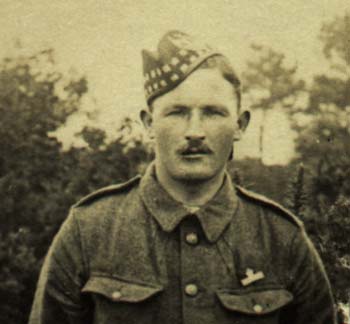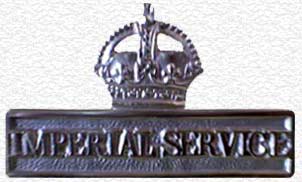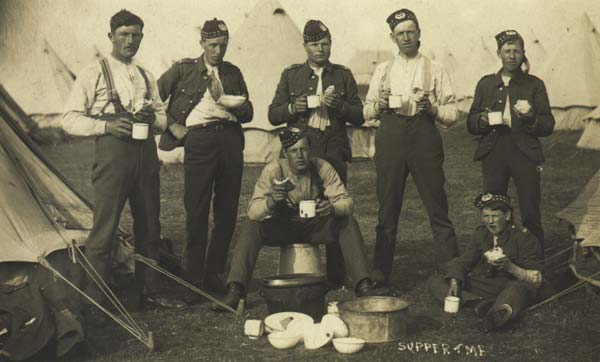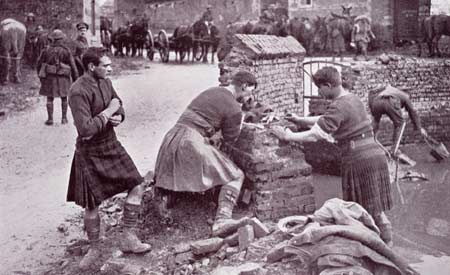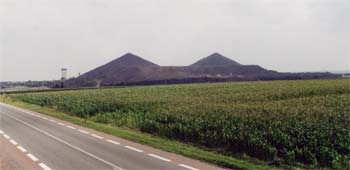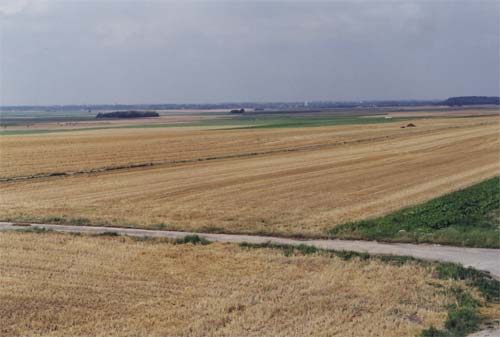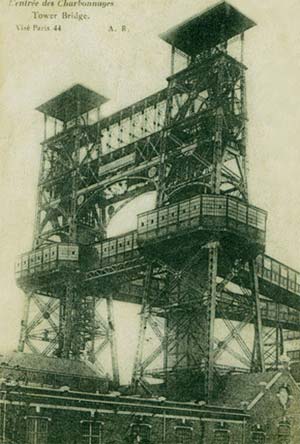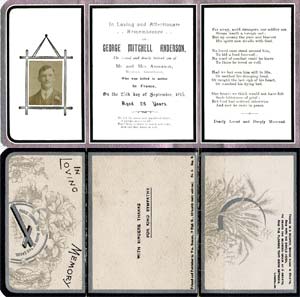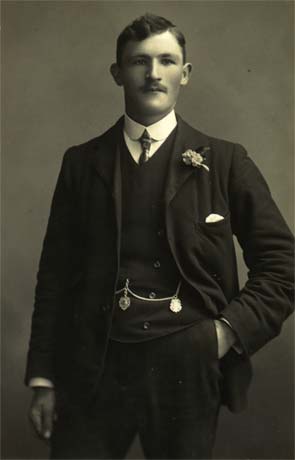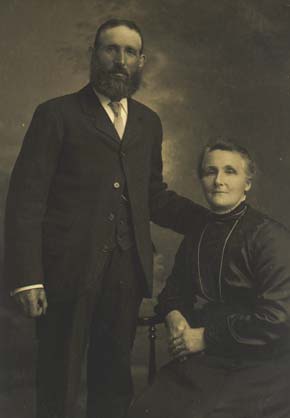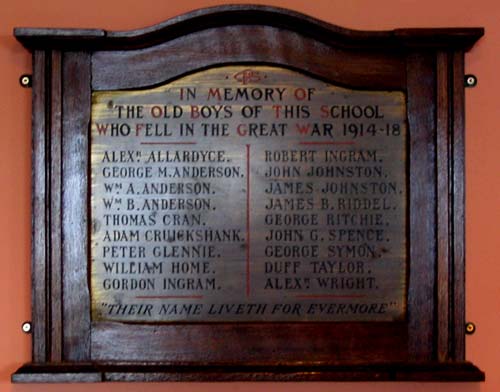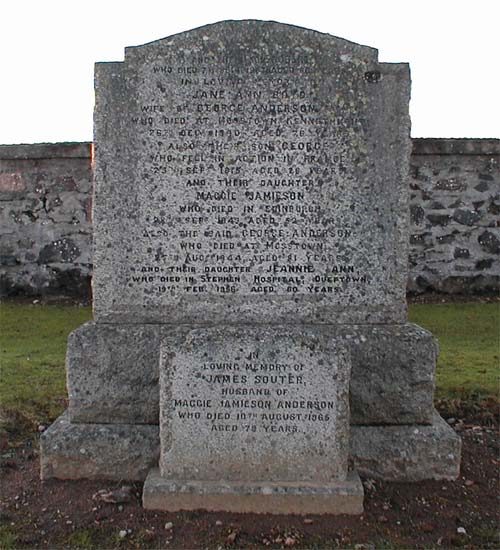|
George Mitchell Anderson was born on 22nd February 1889 at Roadside, Clatt and was the third oldest of a family of three brothers and four sisters. His parents George Anderson and Jane Ann Boyd were of local farming families, the Andersons at Bankhead and the Boyds at Broadmire, Clatt. George Snr worked the croft of Little Towie for some years during which time his family attended Clatt school. Sometime after 1901 the Andersons moved to Auchinleith, Lumsden and, a few years later, moved to the larger farm of Mosstown, Kennethmont as a tenant on the Leith Hall Estate. George, Jnr was a member of the Territorial Force which was established in 1908. Territorials met each week for training and had an annual camp each summer. This was usually the only " holiday " the men had, and better still, they were paid to be there. On joining the Territorials a soldier agreed to be available for home service only and could not be posted overseas unless he volunteered to do so, and even then could only serve in his own unit. When the threat of war came in 1914 most of the Territorial Soldiers of The Gordon Highlanders agreed to serve overseas and thus became available for 'Imperial Service'. These men, including George Anderson, were then entitled to wear The Imperial Service Badge ( clearly shown in the photo above ).
As a member
of 'H' Company, 6th Battalion ( Donside and Banffshire), Gordon Highlanders
(Territorial Force) George reported to The Drill Hall in Huntly with
his local comrades when the Battalion were mobilised in the evening
of 4th August 1914. His company marched by road to Keith where all
the companies of the 6th Gordons assembled during 6th-7th August,
the men being billeted in the school and in private houses. Organisation
completed they left Keith by train on 11th August for Perth. On the
16th they moved on to join The Highland Territorial Brigade in The
Highland Division at Bedford and were billeted in private houses in
the Bromham Road area of the town with their Headquarters in the Girls
High School. For three months they trained and prepared for their
eventual move to the Western Front and on 22nd October were reviewed
by the King. On 9th Nov 1914 the Battalion journeyed to Southampton
by train. That evening at the docks they joined the troopship "Cornishman".
They disembarked at Le Havre, France next morning and marched to No1
Reserve Camp on top of the hill behind the town.
This photograph shows members of 6th Gordons at a pre war Summer Camp, possibly 1914 from which they would have On the 13th
began the journey up the line ending at St Omer where the General
Headquarters of the British Army in France was located. For three
weeks they received further training for the trenches while billeted
in nearby Blendecques.
Members of 6 GH cleaning up after a tour in the trenches, the man shaving still wears the drab apron over his kilt. This was worn to camouflage the kilt and to help keep it clean and dry in the muddy trenches.
On Christmas
Day 1914 they witnessed a remarkable event amid the death and destruction
- the unofficial Christmas Truce. The truce eventually extended to
3rd January 1915, when normal hostilities resumed.
The 6th remained in the Sailly area until 7th March 1915 when they
moved to Estaires in readiness for their first action at The Battle
of Neuve Chapelle (10th -15th March). The 6th went forward to make
an advance at 09.30 on the 13th. Although they gained some ground
in the attack they were unable to advance further. The 2nd Gordons
came up to assist them but after being pinned down by shell and machine
gun fire in No Man's Land for most of the day both units had to fall
back under cover of darkness. The 6th suffered very heavy casualties
in the initial stages of the action. This special
Order was published by Major-General Capper Two months later the 6th were again in action during the Battle of Festubert, 16th - 18th May 1915, where their Brigade been holding the line in front of Festubert. Initially in reserve the 6th became involved in the fighting during the latter stages of the battle. Owing to the severity of the fighting they suffered considerable casualties. George's cousin William Bruce Anderson, Muirs of Seggieden, was killed by a sniper's bullet near Cuinchy in June while serving in the 6th Battalion. Like all the great battles of WW1 Loos was not a single action, but a series of engagements against well defended enemy positions along a wide section of the German front line. The Loos battlefield lies to the north of the coal mining centre of Lens, in the heart of the industrial area of north-east France. The terrain was fairly flat, although dominated by pit heads and the massive spoil heaps created by deep mining. The best known of these landmarks were the Double Crassier and Tower Bridge.
Near Loos en Gohelle, The Double Crassier landmark of 1915 stood on this site. The Loos offensive began following a four day artillery bombardment in which 250,000 shells were fired on the German line. At 5.50 am the artillery fire lifted onto the German front line and a cloud of chlorine gas was released from cylinders placed along the front. This was the first time that the British had used poison gas and it meant that infantry had to get out from their jump off points, advance and fight wearing uncomfortable gas helmets. In some areas the gas did not drift forward onto the German lines, as intended, and caused problems for attackers as they advanced into the cloud to reach their objectives.
The Loos battlefield viewed from Dud Corner Cemetery.
The Gordons advanced from left to right in the middle distance. The 6th Gordons were in assembly trenches in front of Vermelles and were not greatly troubled by the gas when they left them at 6.30 and charged towards the German first line in support of the 2nd Gordons ahead of them, where they reformed and then stormed the Hussey Redoubt. They met little opposition and swept forward 1,200 yards, crossed the Vermelles - Hulluch road and captured a gun battery, together with and German officer and forty men, at Gun Trench. They pressed on and reached the Lens - La Basée road in front of Hulluch before being checked deep within the ememy's defences where they were left exposed with their every movement observed by hidden enemy. The slightest movement drew deadly accurate fire and both battalions suffered heavy losses while the enemy grew stronger by the hour. The Gordon battalions dug in and organised their position for defence expecting reinforcements to come to their assistance. They held on throughout the day.
During the evening a small party of 2nd Border Regiment, to be followed by a body of Royal Engineers, arrived at Gun Trench which they reinforced and worked to bring in wounded Gordons and assist with supplies, ammunition, etc. The enemy moved up silently at 11.30, but the alarm had been raised. The line became a hectic mass of friend and foe, " a gey steer " as one private later described the scene. When the Gordons were virtually surrounded there was nothing for it but to fight their way back to Gun Trench where those already there held their fire till the others got back. Then a murderous fire was rained on the advancing foe, the position was held. Casualty returns for the 6th Gordons after the battle record that 40 men were killed in action, 179 were wounded and 39 were missing. The 2nd Gordons who were ahead of them during the advance had 81 killed, 318 wounded with 117 missing. Many of those posting missing would subsequently be confimed as died in the field. Even though the 7th Division (including 2nd & 6th Gordons) sucessfully pushed their section of the line forward with heavy casualties this was not repeated elswhere at Loos. The battle was called off in failure on 28 September.
Move mouse over medals to view reverse George Anderson was awarded these medals for serving his King and Country in The Great War. Having served in the France / Flanders theatre between 5th August and 22nd November 1914 George qualified for the less common 1914 Star (left). It is often referred to as The Mons Star as the majority if it's recipients were members of The British Expeditionary Force and involved in the retreat from Mons to the line of entrenched positions which became The Western Front. The British War Medal (centre) and Victory Medal (right) were awarded to all personnel.
Clatt Public School Memorial Roll
The Anderson family headstone at Kennethmont Kirkyard (New) "..also their son GEORGE |
